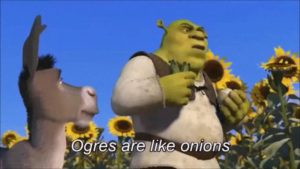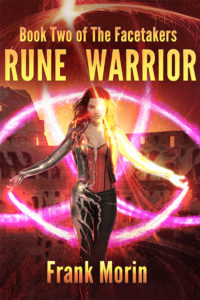I’ve always been able to hold the broadest of outlines in my head. I always knew what the story was, who the characters were, what the goal was, what would happen at the climax and how the book would end. I’d also write in-depth character backgrounds and then I’d put the story in their hands and the characters would tell me how to get to the climax and reach the story goal.
This method of sort-of-plotting and writing by the seat of my pants worked well enough writing fantasy stories. But I wondered what I’d do if I had to provide an outline for a novel or a series. I also wanted to write a mystery/crime novel. Mystery conventions include planting solid clues and red herrings, and developing a credible outline of events. Flying by the seat of my pants, wasn’t going to accomplish this. I had to learn how to outline.
After studying and reading about outlining for mysteries, I created a system which works for me no matter what genre I write in. It’s a mash-up of many bits of wisdom and has its own gaps. The first few points can be done in any order.
1) Know the story goal and the consequences of not meeting the story goal. Keep the stakes high. For example, Zex must steal back the magic cooking pot from the ogre because leprechauns are dying because the gold which sustains them.
2) Build the world. The world determines what your character can/can’t do and the rules which must be followed or broken.
3) Understand the genre requirements and the type of story you are telling. Is it a fantasy (elements of magic or the fantastic) which is told using the Hero’s Journey story arc? Is it a rags to riches, folk tale, thriller, revenge, forbidden love, or crime story? In a fantasy, you’ll need to know how the magic system works and the cost of using magic. In a mystery, you need to know the crime scene, the victim, the perpetrator, and those involved with the victim before you can outline.
4) Create character backgrounds because that will inform their motivations and will determine how they act and react.
5) Figure out your theme – you’re writing the story because you have something to say about the human condition. That something is what you are passionate about. Theme can be as simple as good versus evil or as complex as exploring how people deal with death. Once you’ve thought about the previously mentioned items in this list, take a moment to reflect on what the theme or point of your story is about. This is important because it affects how the story is outlined and written.
6) Assign each character a position or stance on the theme. Some will be for it. Some against. All to varying degrees. For example, let’s use the theme of the ends justify the means for our story with Zex the leprechaun. You must decide if he agrees, disagrees, or believes some variation (sometimes it is necessary) of this theme. All characters (or groups) should have differing views on the matter because that is a source for conflict and tension.
7) Note the beginning, the turning point, the climax, and the end of the story. These are the goal posts you are aiming for. If you are using the three, four or five act structures, or a story telling structure such as the Hero’s Journey, note the events which meet the key requirements for that structure. This should include genre story telling requirements.
8) Broadly fill in the gaps. For mystery, I chart everyone’s motivations and their relationships with the victim. I note the crime scene details then I plot the events leading to the crime scene, and where everyone was when the crime happened. I know who the perpetrator is and how that person will be caught. Then I plot the cat-and-mouse game of clues and red herrings. When writing fantasy, I employ a similar method because the protagonist’s journey is about a problem needing to be solved.
9) Fill in the details by creating scenes. If you’re a pantser, please don’t panic, this method I’m about to share still leaves lots of room for the imagination. I use this system to outline a few scenes at a time (not the entire novel). The broader outline (points 7 and 8) keeps me focussed on the theme while this one allows for tension, conflict, and action on the scene level. I call this the “And Then” method and I must credit author Mahrie G. Reid for showing it to me.
And then something happens. And the character feels ….
For example: And then Zex tripped over an invisible rope and fell into a trap. He panics over his silliness for watching the butterfly rather than focussing on the task. And then the ogre hovers on the rim of he pit, telling Zex that he will be cooked in the magic pot for the ogre’s dinner. Zex feels frightened. And then, Zex swallows his fright and forces himself to outsmart the ogre. He feels emboldened.
Or for a romantic fantasy: And then when Josh rips off his shirt, Kimberley sees the slash of the dragon’s claw across his back. At once, Kimberley feels her heart flutter and she feels faint at the sight of blood. And then Kimberley vomits and feels embarrassed.
10) Now, it’s time to write the story. I write the first few scenes, and then I go back and use the “And then…” method to plot out the next few scenes.
As you write the story, the outline will change. How things happen will change. That is normal and shows that the characters, the plot, and the conflicts are dynamic. Using some form of outlining has the benefit of faster writing, less major revision, and it will help you write the dreaded synopsis because the key elements of the story are determined.



